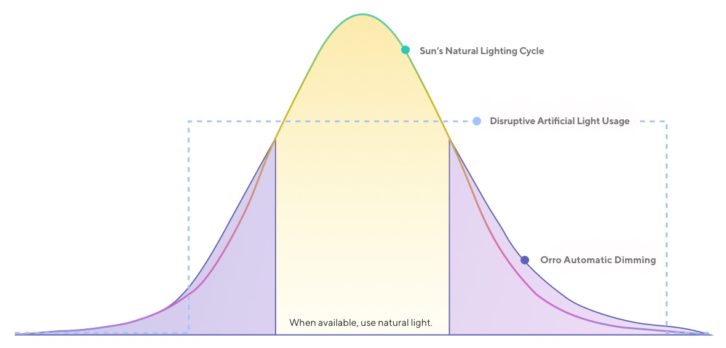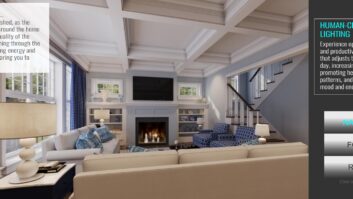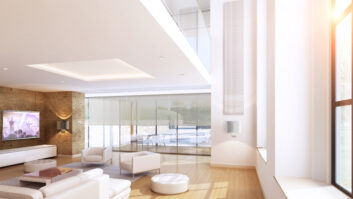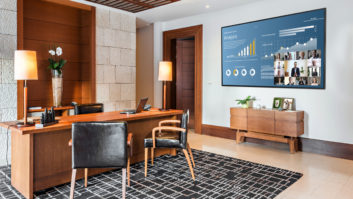
The best technologies are the technologies that customers interact with least. Today, home technologies are advanced enough that they can make decisions for customers. Customers shouldn’t need to think about relatively simple routines like turning on or off a light, locking or unlocking a door, or bringing blinds up and down throughout the day as the sun moves. While the above examples can happen automatically today, they’re not common enough in the average home largely due to the fact that the technologies in a home are disjointed and not acting as one.
Unifying a home system is, of course, a key role a professional installer plays for the customer — and part of the value they add. Right now there’s a growing opportunity to focus more on true, human-centric technologies, adding an entire new layer of intelligence to a home.
Human-Centric Is Important Right Now
The Covid-19 pandemic forced the world to be at home more than ever before. This was great for our industry, as customers were (and still are) suddenly more willing to invest in home technology. They wanted to update their entertainment systems, add security systems, improve their home network setup, and much more. And, more than ever, customers started focusing on health and wellness within their homes. Customers started to question the quality of the air they breathe, the quality of the water they drink, light quality, and more. Why does this matter? Improvements to any of the above can improve mental health, provide more energy, and help you sleep better at night. In part, human-centric technologies can help people with their circadian rhythms, which ultimately helps provide the right balance of energy and sleep during a 24-hour period.

You may ask, “Don’t customers already know how to improve their wellness at home?” At a topical level, sure, but they are not professionals. Customers might think about adding a water purifier to their water system, or use a basic air purifier, but there are many more powerful ways to improve home wellness, and professionals should be leveraging technology to truly improve wellness at home.
Technology can anticipate our needs, automatically make adjustments, and allow us to worry less about managing certain aspects of our home. It can leverage several inputs, like information about the environment, our activity, routines, and much more. Orro was founded with a focus on home wellness, and to this day we use technology to help people live healthier and happier lives at home. We’re not alone — there are other companies focusing on wellness, and, as a community of professional installers who specify, install, and support home technologies, we all play a big role in bringing this concept of human-centric technology to our customers. It’s our job to educate them on the wellness benefits that technology investments provide.
Intelligence Is the Underlying Key
The majority of smart home products and systems available today really aren’t all that smart. They’re connected to the internet, which gives the customer control from an app, but are these products and systems observing the environment in the home and making informed decisions on behalf of the customer? For the most part, no. Does today’s technology have the ability to do so? Absolutely.
There’s one specific piece to the puzzle that is microscopic but has the ability to bring intelligence to the home: sensors. Motion sensors, proximity sensors, ambient light sensors, sound sensors, temperature sensors…the list goes on. These tiny devices provide an incredible ability to measure the world around them to understand what’s happening in your home at all times. Knowing the environment allows the technology to adjust your home throughout the day.
With Orro, we use many sensors to recognize presence, which allows us to then turn on lights, turn off lights, adjust the dimming levels, and keep lights on (when they should be kept on) automatically. “Automatically” is what really adds value to the customer. If the technology in their home can automatically improve their day-to-day life, without them having to think about it or interact with the technology, that’s the home run.
Applying Human-Centric Technology?
To begin the process, start with the human — your customer. Ask them questions about their lives at home, introduce them to technologies that improve air quality, water quality, light quality, and more. Installers should also seek out the manufacturers that are applying human-centric technology to what they do. Manufacturers like Orro, Delos, Flair, and others. Sell the experience of improving your customers’ lives at home with technologies that automatically do so. This industry is in the driver’s seat, so let’s all do our part to improve our customers’ wellness at home.
Patrick Gall, better known as PG, is the head of channel development at Orro. Orro upgrades home life with the simple-to-use, intelligent system that transforms any home into one that helps customers live happier and healthier. He spent about 10 years at Sonos, focusing on its professional installer business both in the U.S. and Europe. He has a passion for the broader professional installer industry and is on a mission to help the industry leverage technologies that improve customers’ lives at home.







